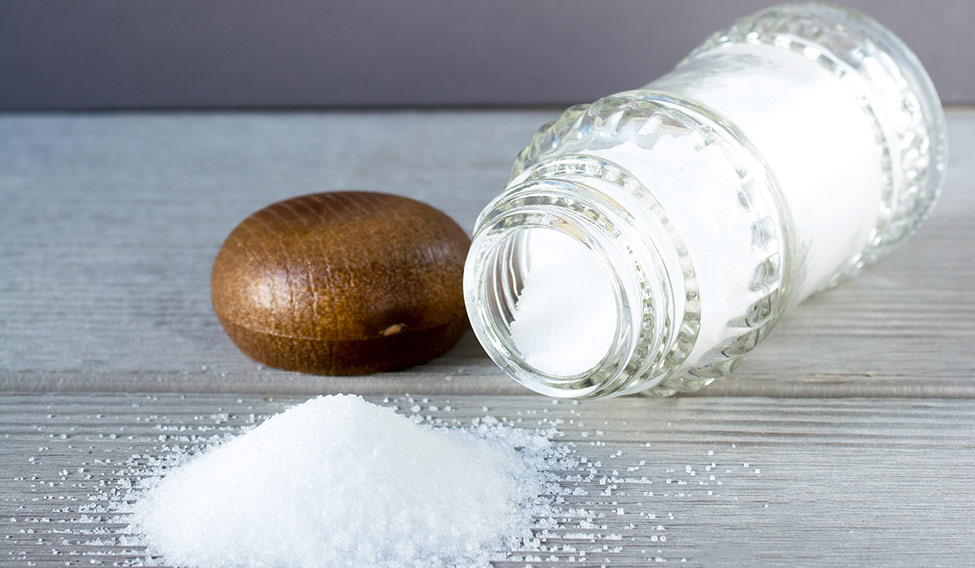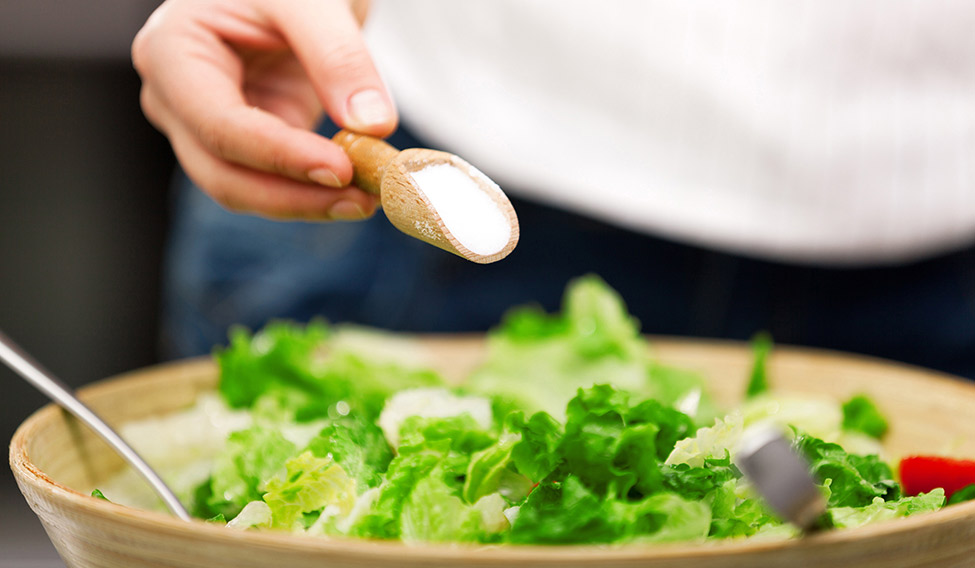It is no longer advisable to take anything with a pinch of salt. Any extra grain of salt in the diet is going to shoot your blood pressure up. As a huge body of research over the past decades shows direct evidence of the link between salt consumption and hypertension, the alarm bells are clanging. Hypertension is that secret operative which destroys vital organs like the heart and kidneys even before the affected person realises what is happening.
India might just explode on salt, given that the per capita consumption is more than double the World Health Organization (WHO) recommendation of 5gm daily. The average Indian consumes 11gm and isolated studies on certain populations show even higher consumption. One study by the Indian Council of Medical Research revealed that in Kashmir, salt intake is as high as 17gm. Another study by the Union ministry of health showed tea pickers have excessive salt to combat the fatigue from excessive perspiration. “They are a high-risk group for hypertension and its resultant ailments,” said Dr Damodar Bachani, deputy commissioner at the ministry of health and family welfare. According to the George Institute for Global Health, an organisation that works on health research, Indian salt consumption patterns are different from that of the west. Only 10 per cent of salt in India comes naturally from food, 90 per cent is “discretionary use”. Interestingly, the salt consumption patterns do not vary largely between urban and rural swathes.
The good news is that a reduction in salt at any stage immediately lowers hypertension. But even as one section of the medical fraternity is calling out to 'Cut the Salt' [an official campaign run by the New York City], another section calls for a measured approach. Salt has been the vehicle for one of the most successful public health campaigns in the country—that of delivering iodine into the diets of a country where almost 80 per cent of its districts are endemic to iodine deficiency diseases (IDD).
Iodine is a mineral nutrient that is naturally lacking in Indian soil. It is also a mineral that is crucial for the development and working of the thyroid gland, an organ that produces hormones necessary for regulating the body's metabolism and growth. Deficiency in iodine is directly linked to cretinism and several other completely preventable mental disorders in newborns and growing children. Low iodine diets have been directly linked with below par intelligence quotient in children. New research shows that iodine is necessary for adults, too; its deficiency, for instance, causes sluggishness.
Ever since the move towards universalisation of iodised salt in India began in 1984, the incidence of IDD has come down by almost 70 per cent as per various studies. This is even though iodised salt has not yet had a hundred per cent penetration.
Salt is iodised in India at 15 parts per million, keeping in mind that a daily intake of 10gm of salt would meet the requirement of 150 microgrammes of iodine per day. (The WHO recommendation of 5gm is just ten years old.) Iodine in table salt in India is administered by adding four main compounds of iodine—potassium iodide, potassium iodate, sodium iodide and sodium iodate. Health experts are divided on whether even at 10gm a pregnant woman's iodine requirements are met. While some believe they are, others note that during pregnancy a woman requires 200 to 250 microgrammes of iodine; a nursing mother's requirement is 290.
Endocrinologists and nutritionists warn that a sudden reduction in salt consumption without making provisions for adjusting the fortification could result in reduced iodine in the diet, with disastrous consequences for the population. While the well-heeled and informed people could augment their iodine intake in different ways, this might not work for the already malnourished and poor sections—the target of universal schemes. “We would never want a situation where we create one health problem while sorting another,” said Bachani. “Salt intake has to be reduced, that is for sure. But we have to evolve a strategy for delivering adequate iodine simultaneously. This is not too difficult.”
While there are several other ways of delivering iodine—as tablets or fortifying flour—nothing is as effective and cheap as fortifying salt. As Chandrakant Pandav, regional coordinator of the Iodine Global Network, South Asia region, explained, salt is one of the few commodities consumed by everyone, its consumption is stable through the year, the technology to iodise salt is easy and cost effective and the fortification does not affect the colour, taste and odour of salt.
Indeed, salt is a recommended vehicle for delivering several other micronutrients, too. These include iron, folic acid, zinc and vitamin A. There are brands that market double fortified salt (with iron and iodine) as a special product, but, as a universal programme, it is still at the development stage. The Central Salt and Marine Chemicals Research Institute in Bhavnagar, Gujarat, has developed iron fortified salt, which could combat iron deficient anaemia, another cause for poor development of children, especially girls. The Hyderabad-based National Institute of Nutrition is doing studies to assess how successful double fortification could be to tackle both diseases, but initial results show that the technology still has to be fine-tuned to be effective.
All this calls for a rethink in the government's approach towards salt. “One way is to reduce the percentage of sodium, which is the villain, with potassium,” says Bruce Neal of the George Institute. “Potassium offers a double benefit. Not only does it reduce sodium, but is itself known to lower blood pressure.”

Potassium, however, can only be added up to a certain point, beyond which the taste changes and the customer may not pick up the product, said Vilas Shirhatti of Tata Salt during a recent public discussion on salt. Products like Potchlor are recommended for severely hypertensives, but they cannot be recommended for the general population.
The other method is to double the iodine content in salt. This does not affect taste, points out Umesh Kapil of the human nutrition unit, All India Institute of Medical Sciences. The existing technology can be modified for this, adds Pandav, re-emphasising that policies on salt iodisation and reducing salt intake are compatible as well as necessary. “The issues will get resolved,” says Kapil reassuringly. Indeed, experts are putting their heads together to come up with a scheme that addresses these issues.
Meanwhile, there is no harm in cutting down on that extra salt. “Processed food are high in salt and that salt is not iodised,” points out Priyanka Rohatgi, senior dietician, Apollo Hospitals, Bengaluru. “It also makes sense to get your iodine from food. Ocean caught fish and shellfish are rich in iodine, so is milk and eggs. Multivitamin pills that contain minerals also have iodine.”
HOW TO REDUCE SALT IN THE DIET
* Public campaign to ensure that packaged food adheres to norms for salt addition and labels it clearly
* Develop a palate for low-salt diet
* Avoid pickles and salty condiments. Don't use salt as a garnish, use lemon juice instead
* Switch to low-sodium salt or flavoured salt. The latter works on the principle that beyond a point, the consumer may find the flavour (garlic, onion, fruit) overpowering and, therefore, automatically reduce use
* Use rock salt or black salt, both of which are marginally lower in sodium and have the added advantage of having other mineral content. However, even these salts should be used sparingly. And, if they completely substitute the food salt in the diet, ensure that you get your iodine from supplements







